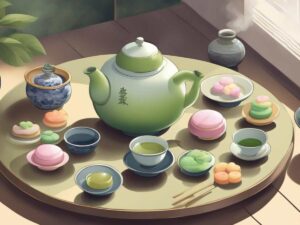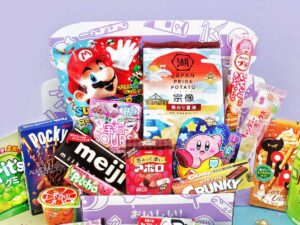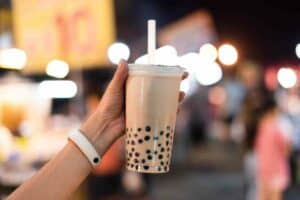Desserts are integral to Japanese culture, with daifuku and mochi being the most popular.
You can now enjoy these delicacies globally thanks to cultural interactions, but how do you tell them apart?
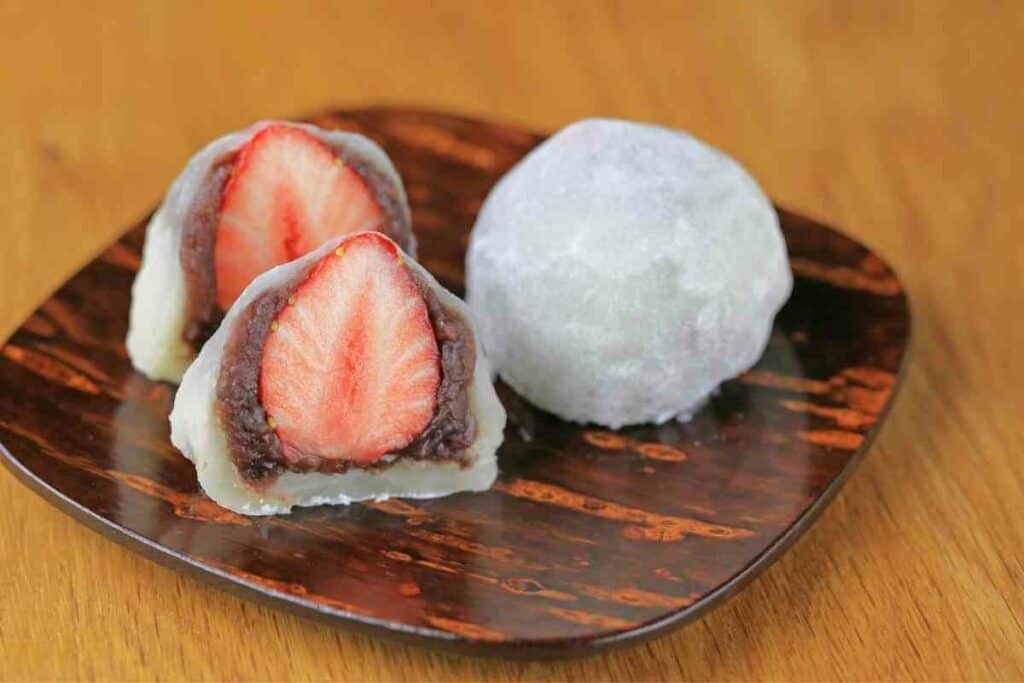
Mochi is a Japanese pounded rice cake made from glutinous rice, while daifuku is a Japanese wagashi (confection) traditionally made by stuffing mochi with a savory red bean paste.
While the fillings for daifuku may change to produce a wide variety of snacks, its traditional recipe remains almost the same.
Table of Contents
What Is The Difference Between Daifuku And Mochi?
The rule of thumb is that all daifuku are mochi, but not all mochi is daifuku.
You can enjoy a sumptuous mochi, but you cannot eat daifuku without first preparing the mochi.
Let’s take you through the key differences.
Texture
Mochi is delicate and tender.
Eating mochi often feels like chewing gum due to glutinous rice properties.
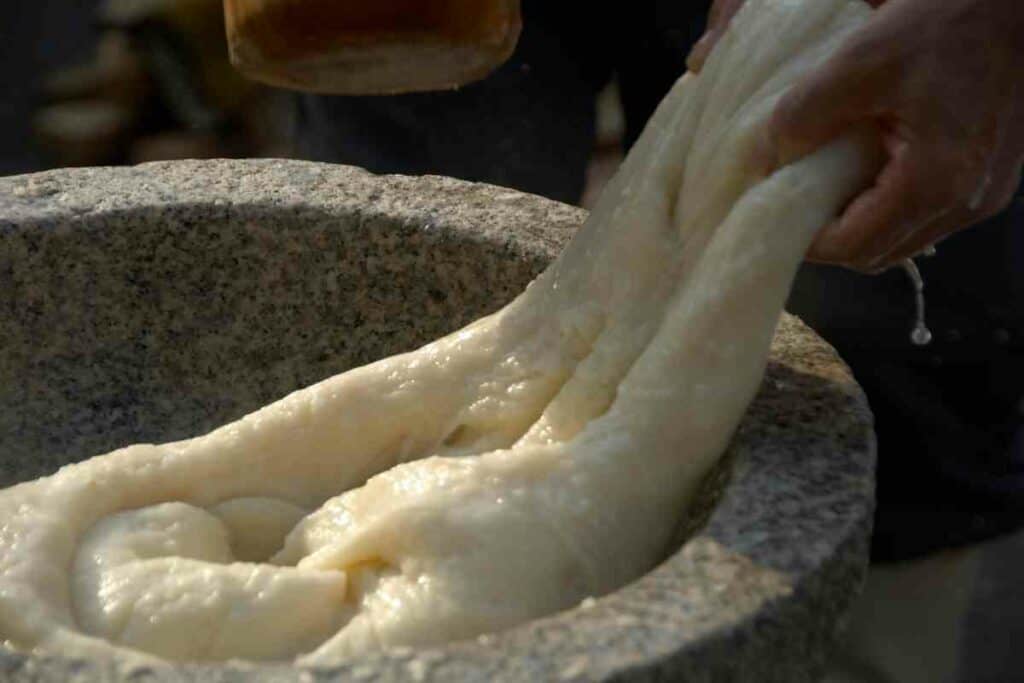
On the other hand, daifuku can have a fine, crispy, or coarse texture depending on the baker’s preference.
The filling used in making the daifuku also determines the texture, with red bean paste giving off a grainy texture.
Flavor
Mochi has a mildly sweet and starchy flavor without adding syrups and garnishes.
Despite mochi being available in different colors and shapes, it usually retains a deep flavor.
Traditionally daifuku has a sweet flavor, but currently, it has no distinctive flavor.
The type of filling and sweetener you opt for will determine how the confection will taste.
Filling
Usually, mochi has no fillings. It only contains the additives introduced before the steaming of the mixture.
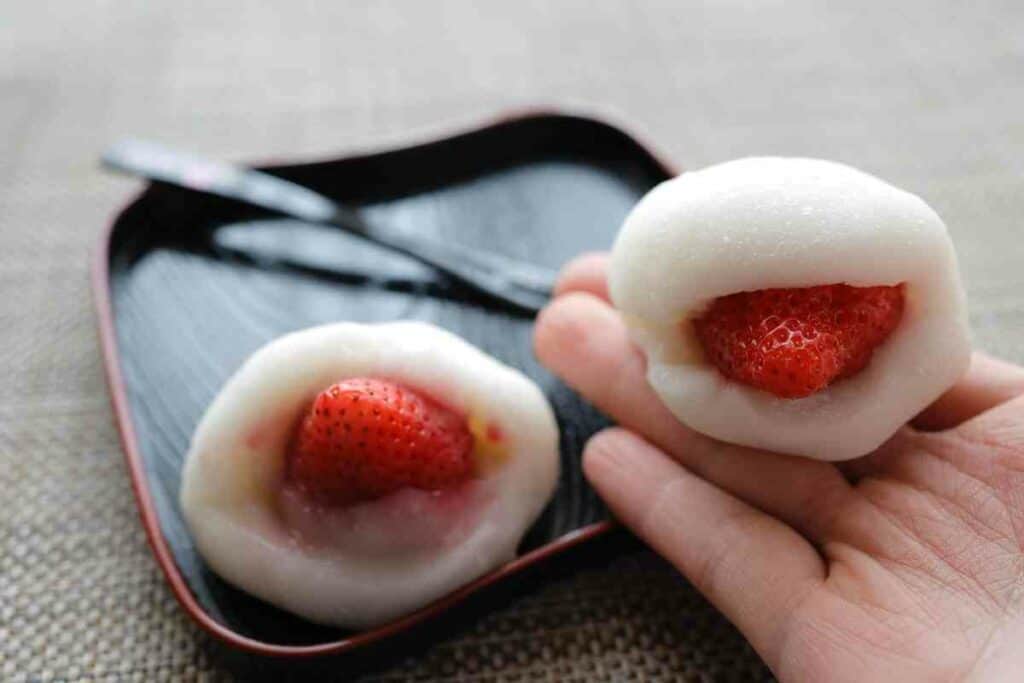
In retrospect, you can use many types of filling for making daifuku.
Besides red bean paste, you can also use white bean paste, chestnut cream, or a blend of the pastes with fresh fruits.
Some common fruits are:
- whole strawberries (ichigo)
- plums (ume)
- blueberries
- grapes
- and peaches
Preparation Method
Overall, the preparation of mochi is quite simple and time conscious.
You can achieve a higher yield of mochi in a considerably short period. However, daifuku is quite labor intensive.
You have to individually fold each daifuku to secure the filling before moving on to the next.
Furthermore, garnishing the dessert also adds to the workload.
What Are The Similarities Between Daifuku And Mochi?
The only similarity between daifuku and mochi is that they both stem from sticky rice.
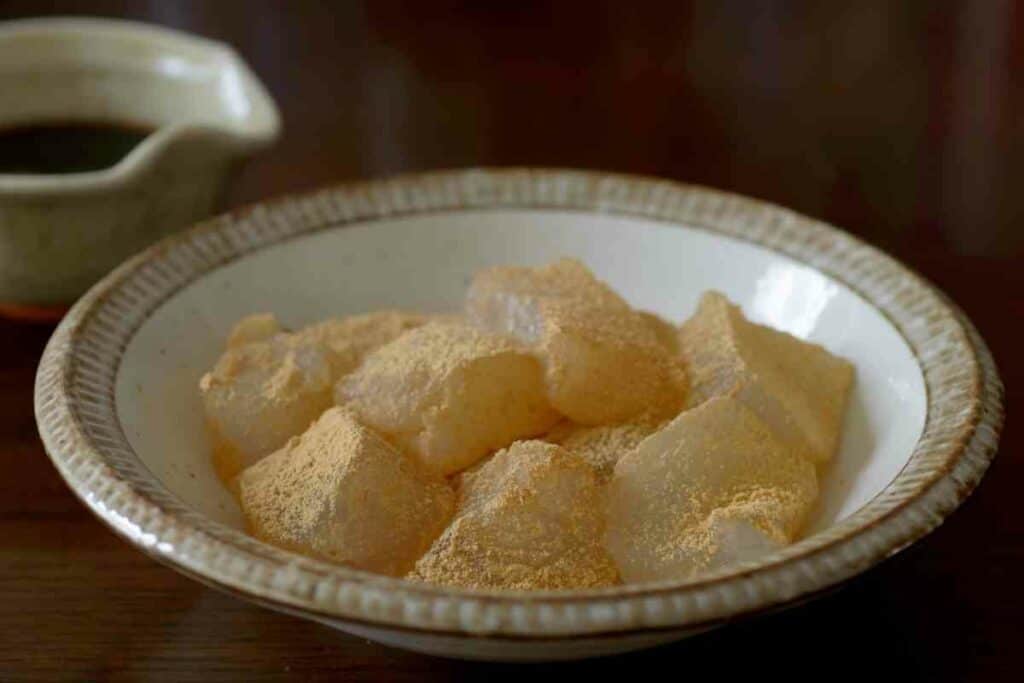
You can make them with pounded rice or grind them to form rice flour/ powder.
Consequently – The cooking method is similar (steaming) to daifuku requiring a few additional steps to get it ready.
How Daifuku And Mochi Are Made
Since daifuku is made from mochi, let’s start by showing you how to make Mochi:
- Sticky/Glutinous rice. This type of rice is an essential ingredient for making mochi. It is low in amylose starch which is responsible for the rice grains sticking together when you cook it. If you use any other rice, you will have a different product altogether.
- Ground the rice. It involves pounding the sticky rice until you end up with slurry.
- Add salt, sugar, or any other additives. Naturally, the slurry is white in color and bland. Mixing the slurry with the additives gives it flavor and allows you to make different recipes.
- Steaming. To cook mochi, steam the mixture on a steamer tray with a parchment lining. Alternatively, you can wrap it in cheesecloth. All this is to prevent the mochi from getting too moist, which interferes with the adhesiveness of the mochi, and the rice particles will typically start to fall apart.
- Rolling. After cooking or steaming the slurry for 30-40 minutes, the mochi is ready. Cut it into smaller pieces and roll it into balls of the requisite size.
You can eat the mochi in its original state or glaze it with any plant-based natural sweetener, be it honey or maple syrup.
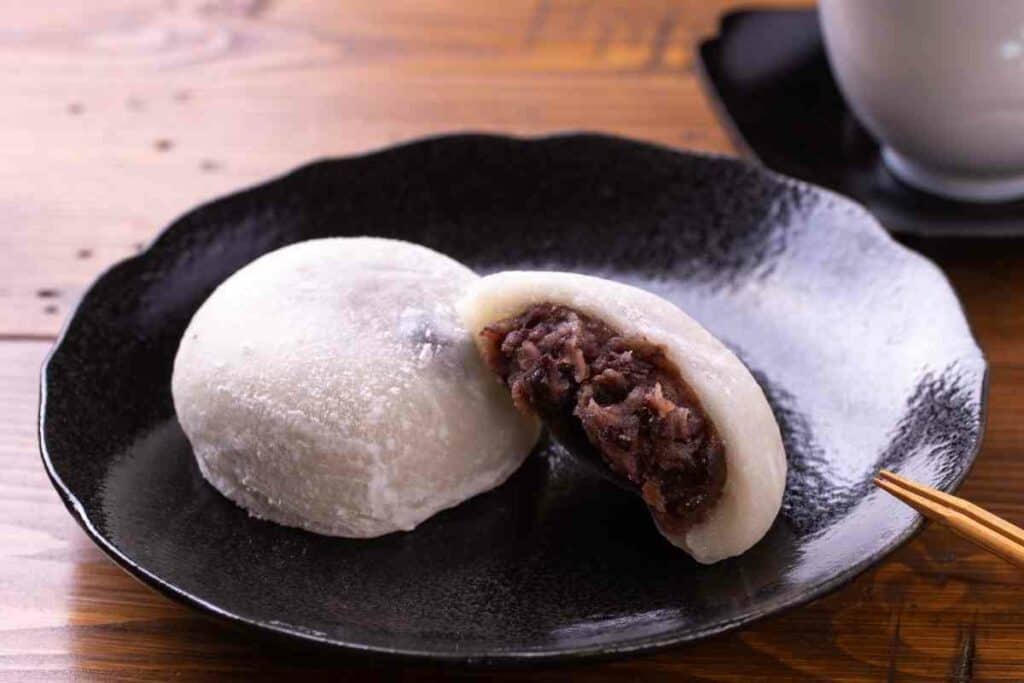
To make daifuku, Step 5 above is not the final process.
A new sequence of events begins after your mochi is ready:
- Flatten the Mochi. On a flat surface, dust it with rice flour and use a rolling pin to evenly thin the mochi to make room for the filling. A thickness of about 2 inches will suffice.
- Cutting. Make circular cuttings from the mochi using a round mold such as a cookie cutter. If you have an extensive working area, you can make multiple pieces at a time.
- Add Filling. Depending on the sweetener paste (red bean, peanut), scoop a spoonful and place it at the center of the mochi. Working from the outer edges, fold the mochi trapping in the filling.
- Garnishing. It is an optional procedure that involves dusting the mochi with sugar or rice flour after adding the filling. The garnishing also helps to seal any leaks in the filling.
Voila! Your daifuku is ready, and you can use different colors or filings to make a variety of desserts.
Are Daifuku and Mochi Healthy?
Japan has the second highest life expectancy in the world at 84.91 years as of 2022.
Consequently, mochi, a staple Japanese dish, must contain ingredients that are good for the body.
Sticky rice, as the main ingredient of mochi, includes the following nutrients:
- Starch – A reliable source of energy
- Potassium – Proper functioning of muscles and nerves and balancing of sodium levels
- Selenium – Powerful antioxidant and boosts the functioning of the immune system
- Calcium – Strong bones and teeth
- Iron – Healthy red blood cells preventing anemia
- Magnesium – Regulation of blood pressure and heart rhythm
The preparation method ensures that the end product is gluten and cholesterol free.
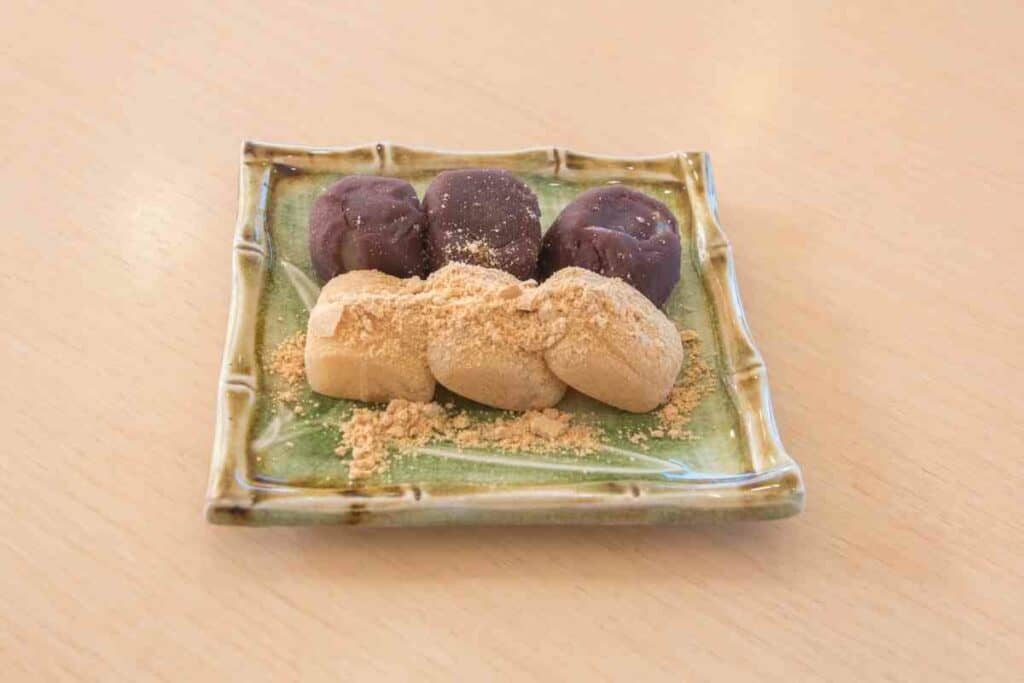
The health benefits from these substrates are immense and will provide a healthier gut while preventing various illnesses.
Besides calcium and starch from mochi, red beans, the primary filling of daifuku, also contain:
- Low-fat protein – healthy gut
- Folate acid – Instrumental in cell division, tissue growth, and healthy red blood cells
- Fiber – Lower cholesterol and helps regulate blood sugar levels
- Manganese – helps in blood coagulation, metabolism of amino acids, and bone development
Instead of red beans, you can use other fillings such as Japanese peanuts and strawberries.
Not only do they add more flavor, but they are also all beneficial to your health.
Despite the numerous dietary and health benefits, eating these deserts without moderation is bad for your health.
Tame your sweet tooth!
Consuming too much cake will inadvertently raise your blood sugar levels, increasing your risk of developing type 2 diabetes.
Moreover – Weight gain affects your blood pressure levels and, if lets unchecked, can result in heart conditions.
Frequently Asked Questions
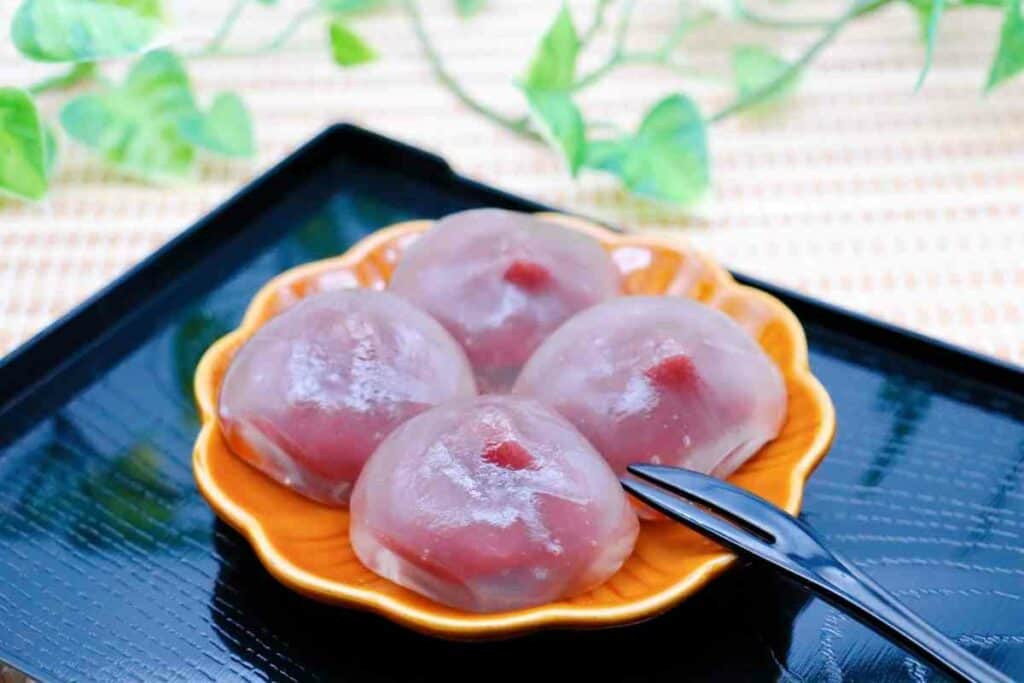
Are daifuku and mochi gluten free?
Yes, traditional and homemade desserts are not only gluten-free but have no cholesterol.
Naturally, the glutinous rice and the plant pastes/ sweeteners have no traces of harmful substrates.
When buying commercial rice flour, check carefully that no additives or preservatives used have a wheat base known to contain gluten.
Is Mochi Dangerous to Eat?
While the ingredients and preparation method are safe, their dense and sticky texture can cause choking.
Primarily, the choking results from improper chewing of the dessert before swallowing; with kids and the elderly are more susceptible to this hazard.
It would be best to keep mochi away from them or have a chaperone around in case first aid is required.
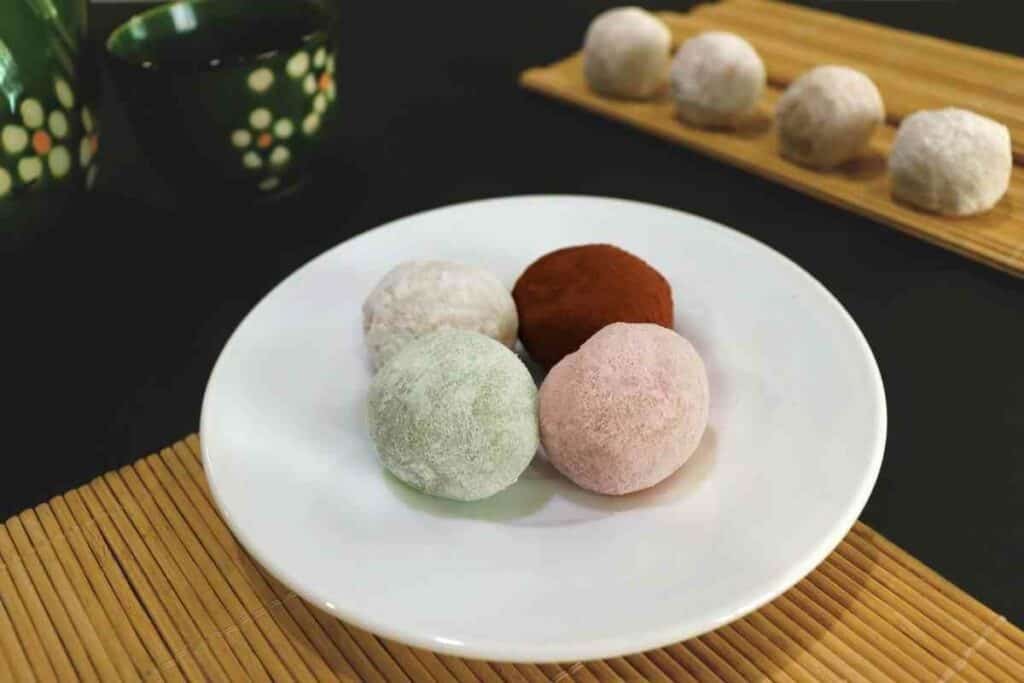
How do you eat mochi properly?
Cut a small piece of mochi at a time.
We recommend a portion half the size of a regular matchbox. Chew the piece thoroughly with your teeth, breaking the sticky dessert further into smaller pieces.
Besides, the slow chewing allows saliva to moisten the chunk for easy swallowing.
Final Thoughts
Ideally, a small piece of mochi and daifuku is enough to give a high burst of energy plus your daily recommendation of nutrients.
After reading this article, we hope you can tell the difference between daifuku and mochi by texture, flavor, type of filling, and preparation method.
- Japanese Traditional Sweets (Wagashi): A Guide to Their Origins and Varieties
- A Taste of Japan in Every Bite – Japanese Candy & Snack Box Review
- Bubble Tea vs Boba Compared: What’s the Difference?
- Best Izakaya Foods for a Relaxed Night Out (My Top 10 Picks)
- Edo Kiriko Whiskey Glasses (Japanese Heritage in Every Pour)
- Japanese Viral Foods on Social Media (Discover the Top 10)

